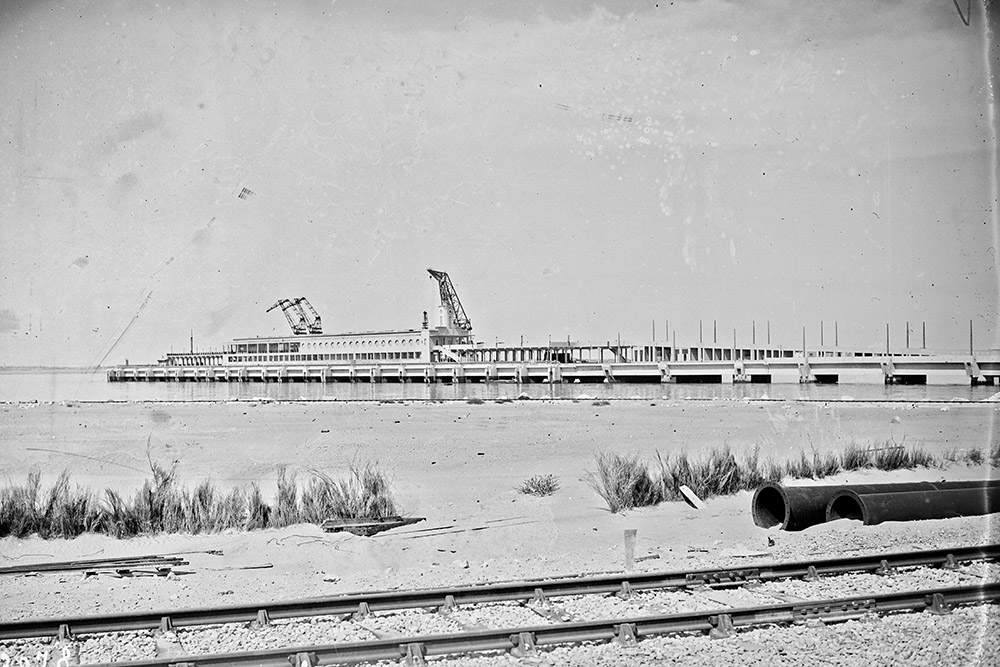Môle d'Escale
In 1910, the Bordeaux Chamber of Commerce proposed a Gironde River outpost to streamline transit via the Bordeaux–Verdon railway. Construction began in 1929, partly funded by German reparations, with Hersent and Julius Berger Tiefbau AG handling the build.
The 370m jetty, supported by 96 concrete piers, could berth large ships year-round. A four-track train station, hydraulic shock absorbers, and an Art Deco reception hall housed customs, a post office, and passenger lounges. A 372m viaduct connected it to the mainland.
Môle d'Escale opened on July 22, 1933, welcoming the Champlain from Le Havre. Electric train service began a year later.
On June 21, 1940, the Massilia departed, carrying French parliamentarians fleeing the Wehrmacht, and the next day, the Primauguet sailed with part of the Banque de France’s gold reserves to Africa.
During World War II, operations at Môle d'Escale halted as the German occupiers repurposed it for anti-aircraft defenses. A small flottila of harbour defence vessels was based here.
As the Germans withdrew from Pointe de Grave, they destroyed the Môle d'Escale on November 11, 1944. In 1964, its remains were used for an oil terminal, which closed shortly after. Today, little of the original structure remains.
Do you have more information about this location? Inform us!
Source
- Text: TracesofWar
- Photos: Bibliothèque nationale de France
- Ashown, P., A Brilliant Little Operation - The Cockleshell Heroes and The Most Courageous Raid of World War 2 (2013)
Nearby
Museum
Point of interest
Monument
- War Memorial Le Verdon-sur-Mer - Le Verdon-sur-Mer
- Memorial Operation Frankton Port Médoc - Le Verdon-sur-Mer
- Memorials Régiment du Lot & 34e Régiment d'Infanterie - Le Verdon-sur-Mer
Cemetery
- Commonwealth War Graves Le Verdon-sur-Mer - Le Verdon-sur-Mer
- French war graves Le Verdon-sur-Mer - Le Verdon-sur-Mer
- Commonwealth War Graves Soulac-sur-Mer - Soulac-sur-Mer




